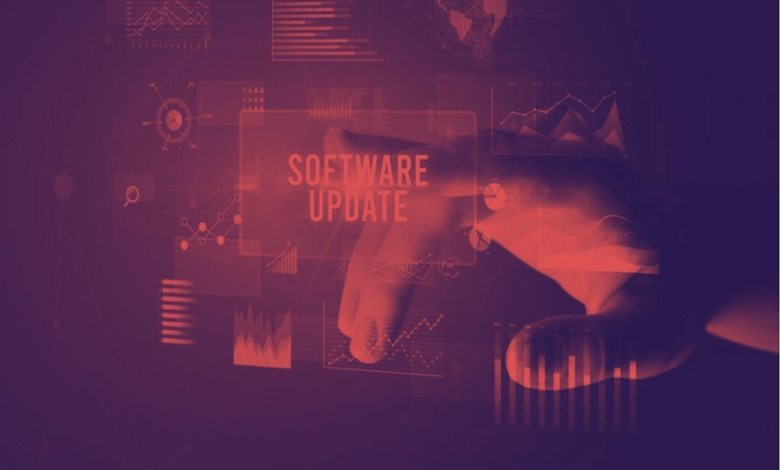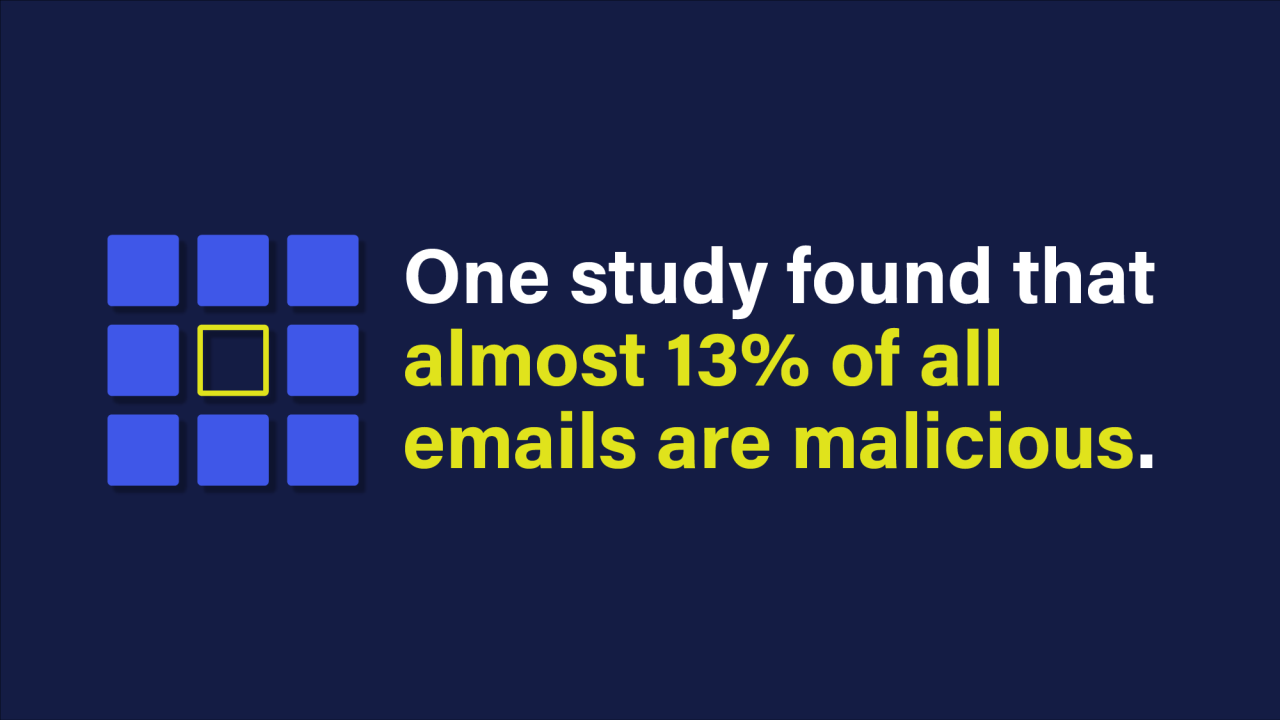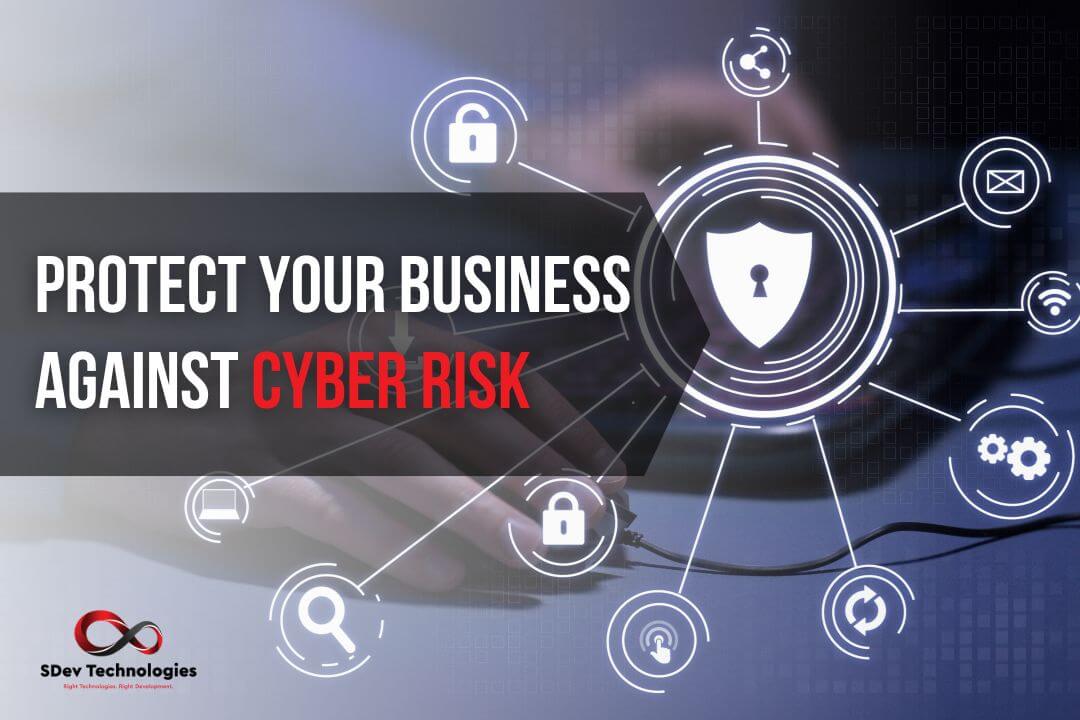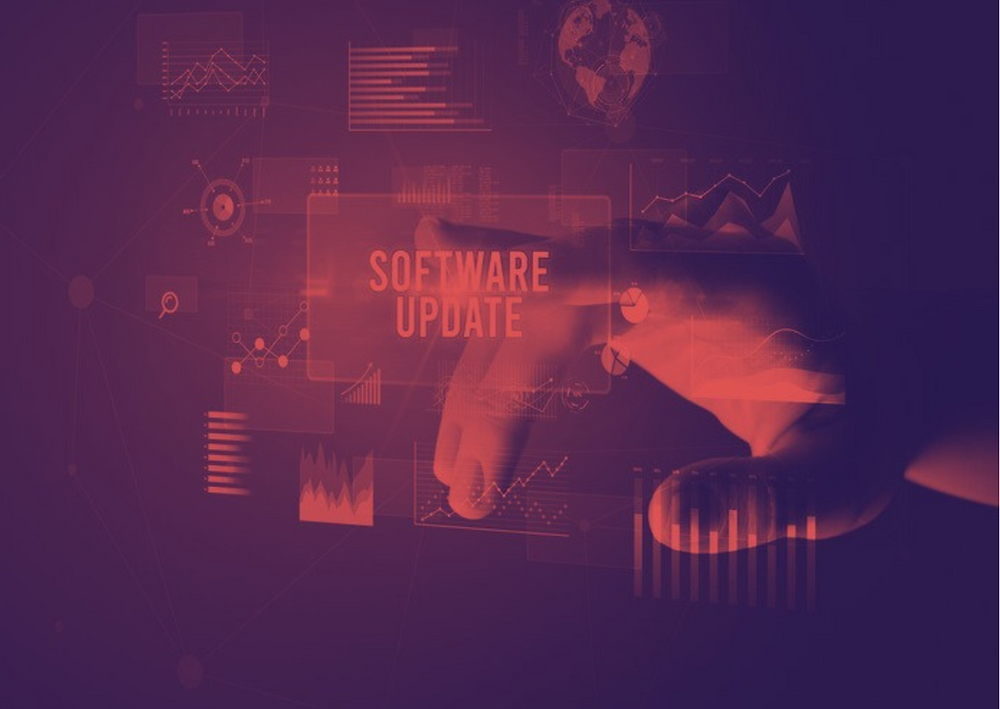
How Can Businesses Lower Cyber Attack Risks?
How can businesses lower the risks of cyber attacks? This is a critical question for organizations in today’s digital landscape. Cybersecurity threats are constantly evolving, making it essential for businesses of all sizes to proactively implement robust security measures. From employee training to securing network infrastructure, this guide delves into strategies that can significantly reduce the likelihood and impact of cyberattacks.
This comprehensive guide explores various strategies to bolster defenses against cyber threats, equipping businesses with the knowledge and tools to navigate the ever-changing digital security landscape. We’ll cover everything from implementing robust security measures to developing a comprehensive incident response plan.
Implementing Robust Security Measures
Cybersecurity threats are constantly evolving, making proactive measures crucial for businesses of all sizes. A robust security posture isn’t just about reacting to attacks; it’s about preventing them in the first place. This involves a multi-faceted approach encompassing technical safeguards, employee training, and continuous monitoring. By understanding and implementing these strategies, businesses can significantly reduce their vulnerability to cyberattacks.Effective cybersecurity requires a comprehensive strategy that integrates various security measures.
This includes not only technical solutions but also employee awareness and consistent policy enforcement.
Technical Security Measures
Implementing robust technical safeguards is paramount in preventing cyberattacks. These measures include a variety of tools and protocols that can significantly reduce the risk of breaches.
- Firewalls: Firewalls act as a barrier between a network and the internet, controlling incoming and outgoing traffic based on predefined rules. They prevent unauthorized access and block malicious traffic. For example, a firewall can prevent hackers from gaining access to sensitive data by blocking unauthorized connections.
- Intrusion Detection and Prevention Systems (IDS/IPS): These systems monitor network traffic for malicious activity and can automatically block or alert administrators to suspicious behavior. They are critical for identifying and responding to real-time threats.
- Antivirus and Anti-malware Software: These programs are essential for detecting and removing viruses, malware, and other harmful software from devices. Regular updates are crucial to maintain effectiveness against evolving threats.
- Data Loss Prevention (DLP) Systems: DLP systems monitor and control sensitive data to prevent unauthorized access, use, disclosure, or modification. They help to prevent sensitive data from leaving the organization’s control through various channels.
Multi-Factor Authentication (MFA)
Multi-factor authentication (MFA) is a crucial security measure that adds an extra layer of protection beyond a simple username and password. By requiring multiple forms of verification, MFA significantly reduces the risk of unauthorized access. For example, a user might need to enter a code from a mobile app or a security token in addition to their password.
Strong Password Policy
Creating a strong password policy and ensuring employee adherence is vital. A strong policy should mandate complex passwords, regular password changes, and discourage the use of easily guessed passwords. This policy should be communicated clearly to all employees. The policy should also include procedures for handling password resets and breaches.
- Password Complexity Requirements: Passwords should include a mix of uppercase and lowercase letters, numbers, and symbols. The length of the password should also be considered.
- Regular Password Changes: Enforcing regular password changes forces users to update their passwords frequently, mitigating the risk associated with compromised passwords.
- Password Management Tools: Implementing password management tools can help users create and manage strong, unique passwords across multiple accounts. This significantly reduces the risk of reusing passwords and enhances security.
Security Software Overview
Different types of security software address various threats. A comprehensive security strategy should incorporate multiple layers of protection.
| Security Software Type | Primary Function | Threats Mitigated |
|---|---|---|
| Antivirus | Detects and removes viruses, worms, Trojans, and other malware. | Malware infections, ransomware attacks |
| Firewall | Controls network traffic, blocking unauthorized access. | Network intrusions, unauthorized access |
| Intrusion Detection/Prevention System (IDS/IPS) | Monitors network traffic for malicious activity and can automatically block or alert administrators. | Network attacks, denial-of-service (DoS) attacks |
| Data Loss Prevention (DLP) | Monitors and controls sensitive data to prevent unauthorized access or disclosure. | Data breaches, insider threats |
Security Audits and Vulnerability Assessments
Regular security audits and vulnerability assessments are critical for identifying weaknesses in a system. These assessments provide insights into potential vulnerabilities and help prioritize remediation efforts. They are vital for proactively addressing security gaps. Audits should be performed regularly, and findings should be addressed promptly.
Educating Employees on Cyber Risks
Protecting your business from cyberattacks isn’t just about robust technical defenses; it’s equally crucial to cultivate a security-conscious culture within your workforce. Employees are often the weakest link, inadvertently opening the door to threats. Proactive training and clear communication are vital to mitigate this vulnerability.Cybersecurity threats are constantly evolving, making it essential to equip employees with the knowledge and skills to recognize and respond to emerging dangers.
This proactive approach not only strengthens your defenses but also fosters a culture of vigilance, where employees become active participants in maintaining your company’s digital safety.
Common Cyber Threats
Understanding the landscape of common cyber threats is the first step in empowering employees to recognize potential risks. Phishing scams, often disguised as legitimate communications, aim to trick employees into revealing sensitive information, such as usernames, passwords, or credit card details. Malware, including viruses, spyware, and ransomware, can infiltrate systems and cause significant damage, from data breaches to system disruptions.
Protecting against cyber threats is crucial for any business. One way to bolster your defenses is to stay informed about potential vulnerabilities like the ones detailed in the Azure Cosmos DB Vulnerability Details. Understanding these specifics helps businesses proactively patch and strengthen their systems. By implementing robust security protocols, including regular security audits and employee training, companies can significantly reduce their risk profile.
This proactive approach is key to mitigating cyber threats in the ever-evolving digital landscape. Azure Cosmos DB Vulnerability Details provides valuable insights into the specifics of these threats.
Social engineering, a tactic that manipulates human psychology, can be just as dangerous as technical attacks.
Practical Scenarios and Reactions
Equipping employees with practical scenarios can make learning more impactful. Imagine an employee receiving an email that appears to be from their bank, requesting immediate account information update. This is a classic phishing attempt. Training should emphasize that employees should never click suspicious links or provide sensitive information via unsolicited emails. Instead, they should directly contact the bank via a verified phone number or website.
Similarly, a seemingly harmless download might contain malicious software. Training should stress the importance of verifying the source and avoiding clicking on unknown attachments.
Reporting Procedures
Establishing clear reporting procedures is essential for swift response to suspicious activity. A dedicated email address, a designated hotline, or a secure online portal should be established for employees to report suspicious emails, unusual activity on company systems, or any other potential security concerns. Emphasize the importance of detailed reporting, including the date, time, nature of the incident, and any relevant details.
Employees should be assured that their reports will be handled confidentially and investigated promptly.
Regular Training Updates
Cyber threats evolve rapidly, necessitating regular training updates. Keeping abreast of new threats, techniques, and emerging vulnerabilities is paramount. This can be achieved by incorporating periodic training sessions, workshops, or even microlearning modules that address specific threats. Consider a system for regular updates to training materials, ensuring that information remains current and relevant.
Employee Vulnerability Checklist
A checklist for identifying and mitigating employee vulnerabilities can be a valuable tool. This checklist should cover aspects such as password security, safe browsing habits, social media security practices, and the recognition of phishing attempts. The checklist should also include a section for addressing any observed weaknesses in employee security practices. A crucial aspect is to encourage employees to seek clarification on any security-related concerns they have.
This ensures that they have the resources they need to maintain a high level of security awareness.
Reducing cyber risks for businesses is crucial. Strong passwords, robust security software, and regular security audits are essential steps. Fortunately, the Department of Justice Offers Safe Harbor for MA Transactions ( Department of Justice Offers Safe Harbor for MA Transactions ) might offer some helpful guidelines for certain transactions. Ultimately, staying informed about evolving threats and implementing proactive measures is key to a safer digital environment for businesses.
Developing a Comprehensive Incident Response Plan
A robust cybersecurity posture isn’t just about prevention; it’s equally crucial to have a well-defined plan for responding to a cyberattack. A comprehensive incident response plan acts as a roadmap, guiding organizations through the chaos of a breach, minimizing damage, and restoring operations swiftly. This proactive approach is vital for maintaining business continuity and reputation.A well-structured incident response plan is not a static document; it’s a living document that needs regular review and updates.
It should reflect the evolving threat landscape and the organization’s specific vulnerabilities. This dynamic nature is essential for staying ahead of sophisticated cybercriminals.
Incident Response Plan Procedures
A well-defined incident response plan Artikels procedures for handling various types of cyberattacks. This includes identifying the initial indicators of a potential attack, isolating affected systems, and initiating containment measures. This proactive approach is critical in mitigating the scope of a breach. The plan should address both internal and external threats, including phishing attacks, ransomware, and data breaches.
- Initial Response: The plan should clearly define the initial steps to be taken upon discovering a potential incident. This includes immediately isolating affected systems to prevent further data compromise and contacting the relevant security team or personnel.
- Damage Containment: A critical aspect of the plan involves containing the damage caused by the cyberattack. This involves identifying the extent of the breach, isolating infected systems to limit the spread, and taking steps to prevent further data exfiltration. These steps help minimize the impact on the business and its stakeholders.
- Data Recovery: Data backups and recovery strategies are fundamental components of a comprehensive incident response plan. The plan should clearly Artikel the backup and recovery procedures, including testing and validation to ensure data integrity and availability.
Communication and Transparency
Open and transparent communication is crucial during a cyber incident. Keeping stakeholders informed about the situation, the response efforts, and the anticipated recovery time frame builds trust and minimizes the negative impact on reputation.
- Internal Communication: The plan should Artikel procedures for internal communication during a cyber incident, including designated channels for updates, information sharing, and coordination between different teams involved in the response.
- External Communication: Effective external communication is vital for maintaining public trust and handling potential media inquiries. This includes informing relevant regulatory bodies and customers about the incident and the measures taken to address it.
Roles and Responsibilities
Defining clear roles and responsibilities for different teams involved in the incident response process is essential for effective coordination and timely action. This ensures that each team knows its specific tasks and responsibilities during a cyberattack.
| Team | Responsibilities |
|---|---|
| Security Team | Lead incident response, analyze the breach, and implement containment measures. |
| IT Team | Isolate affected systems, restore services, and recover data. |
| Legal Team | Advise on legal obligations and regulatory compliance. |
| Public Relations | Manage external communications and maintain stakeholder relations. |
Data Backups and Recovery Strategies
Robust data backups and recovery strategies are critical for minimizing data loss and downtime during a cyberattack. Regular testing of these strategies is essential for ensuring their effectiveness and readiness.
Regular data backups and tested recovery procedures are crucial for business continuity.
- Backup Frequency: The frequency of backups should be determined based on the criticality of the data and the potential impact of data loss. More frequent backups are necessary for mission-critical data.
- Backup Storage: Backups should be stored in a secure location separate from the primary system to prevent data loss in case of a physical attack or system failure.
Securing Network Infrastructure: How Can Businesses Lower The Risks Of Cyber Attacks

Network security is paramount for any business operating in the digital age. A robust network infrastructure acts as the bedrock for all data transmission and access, protecting sensitive information and maintaining business continuity. Vulnerabilities in this infrastructure can lead to devastating consequences, including data breaches, financial losses, and reputational damage. This section delves into critical aspects of securing network infrastructure, from essential tools and protocols to common vulnerabilities and proactive mitigation strategies.
Importance of Security Tools
Network security is not a one-size-fits-all solution. Effective security hinges on a layered approach, employing various tools and technologies. Firewalls, intrusion detection systems, and antivirus software are fundamental components of a comprehensive security strategy. Firewalls act as gatekeepers, controlling network traffic and blocking unauthorized access. Intrusion detection systems continuously monitor network activity for suspicious patterns, alerting administrators to potential threats in real-time.
Antivirus software safeguards against malware and malicious code, preventing infection and data compromise.
Network Security Protocols
Various network security protocols exist, each with its own strengths and weaknesses. Protocols like Secure Sockets Layer (SSL) and Transport Layer Security (TLS) encrypt data transmitted over the network, ensuring confidentiality. Virtual Private Networks (VPNs) create secure connections over public networks, providing a safe channel for remote access. Comparing and contrasting these protocols reveals that SSL/TLS excels at encrypting web traffic, while VPNs are ideal for securing remote connections.
Choosing the appropriate protocol depends on the specific security needs and the type of data being transmitted.
Reducing cyber risks for businesses often boils down to robust security protocols and vigilance. A crucial step is proactively identifying vulnerabilities in code, and that’s where tools like those discussed in “Deploying AI Code Safety Goggles Needed” Deploying AI Code Safety Goggles Needed come in. By leveraging AI to scan code for potential weaknesses, businesses can significantly mitigate the risk of attacks exploiting those vulnerabilities, ultimately bolstering their overall security posture.
Common Network Vulnerabilities
Several vulnerabilities can expose a network to attack. Outdated software, weak passwords, and unpatched devices are frequent points of entry. Misconfigured firewalls, inadequate intrusion detection systems, and insufficient security policies can also leave networks vulnerable. Addressing these vulnerabilities requires proactive measures, such as regular software updates, strong password management, and robust security policies.
Network Device and Software Updates
Regular updates and patching are crucial for maintaining network security. New vulnerabilities are discovered constantly, and updates often address these issues. Failing to apply these updates leaves systems vulnerable to exploitation. A standardized process for regularly updating network devices and software is essential. This process should include scheduling, testing, and documentation.
Securing Remote Access
Remote access to company networks is becoming increasingly common. Ensuring the security of these remote connections is paramount. A structured approach is necessary for remote access security. The table below Artikels the steps for securing remote access to company networks.
| Step | Action |
|---|---|
| 1 | Implement strong authentication mechanisms, such as multi-factor authentication (MFA). |
| 2 | Utilize a Virtual Private Network (VPN) for encrypted connections. |
| 3 | Restrict remote access to authorized users only. |
| 4 | Regularly review and update access permissions. |
| 5 | Monitor remote access activity for suspicious behavior. |
| 6 | Establish clear policies and procedures for remote access. |
Data Protection and Privacy
Protecting sensitive data is paramount in today’s digital landscape. Businesses must proactively implement robust data protection strategies to safeguard customer information, comply with regulations, and maintain public trust. This involves more than just technical measures; it requires a comprehensive approach encompassing policies, procedures, and employee training.Data breaches can have devastating consequences, including financial losses, reputational damage, and legal liabilities.
A strong data protection framework acts as a crucial line of defense, minimizing the risk of such incidents. This section will delve into the critical aspects of data encryption, data loss prevention, regulatory compliance, best practices, and a clear data handling process.
Data Encryption Methods
Data encryption transforms readable data into an unreadable format, making it unusable by unauthorized individuals. Various encryption methods exist, each with its strengths and weaknesses. Symmetric encryption, using a single key for both encryption and decryption, is faster but requires secure key management. Asymmetric encryption, employing separate keys for encryption and decryption, enhances security but is computationally more intensive.
Hybrid approaches combine both methods for optimal security and performance. Examples include the Advanced Encryption Standard (AES) for symmetric encryption and RSA for asymmetric encryption. These methods are widely used in protecting sensitive information like financial transactions, personal data, and intellectual property.
Data Loss Prevention (DLP) Solutions, How can businesses lower the risks of cyber attacks
Data loss prevention (DLP) solutions are critical for preventing sensitive data from leaving the organization’s control. These solutions monitor data in transit and at rest, identifying and blocking unauthorized access, exfiltration, and breaches. DLP tools can be integrated into various systems, including email, file sharing platforms, and cloud storage, enabling organizations to proactively protect their data. For instance, a DLP system might flag an attempt to send a confidential document outside the organization’s network.
Data Security Regulations
Different jurisdictions have varying data protection regulations, each with specific requirements and penalties for non-compliance. General Data Protection Regulation (GDPR) in the European Union focuses on the rights of individuals concerning their personal data. The California Consumer Privacy Act (CCPA) in the US grants consumers greater control over their personal information. Other regulations, like HIPAA (Health Insurance Portability and Accountability Act) and PCI DSS (Payment Card Industry Data Security Standard), address specific sectors.
These regulations highlight the importance of a comprehensive data protection strategy that considers diverse legal frameworks.
Best Practices for Managing Sensitive Data
Implementing a set of best practices is crucial for effective data security. These practices include:
- Data Minimization: Collect only the necessary data required for business operations. Collecting excessive data increases the attack surface and the potential for misuse.
- Access Control: Restrict access to sensitive data based on the principle of least privilege, granting users only the necessary permissions to perform their duties.
- Regular Security Audits: Regularly evaluate security controls and procedures to identify vulnerabilities and ensure ongoing effectiveness.
- Employee Training: Educate employees about data security policies and best practices to mitigate the risk of human error.
Data Handling Process Flowchart
The following flowchart illustrates the data handling process, from collection to disposal:[Insert a flowchart here depicting the data handling process. The flowchart should include stages like collection, storage, processing, transmission, and disposal. Each stage should be clearly labeled and include details on the security measures applied at each step. For example, encryption during transmission, access controls during storage, and secure disposal procedures.]
Third-Party Risk Management

Protecting your business from cyber threats extends beyond your internal systems. A significant portion of vulnerabilities often lie in the intricate web of third-party vendors, partners, and contractors that support your operations. Understanding and mitigating third-party risks is crucial for maintaining a robust security posture. Ignoring these risks can leave your organization exposed to potentially devastating attacks.Assessing the security practices of third-party providers is essential to minimize the risk of cyber incidents.
Effective risk management involves a proactive approach to identifying, evaluating, and mitigating the security vulnerabilities introduced by these external entities. This proactive approach helps prevent a range of potential problems, from data breaches to financial losses.
Assessing Third-Party Security Posture
Third-party vendors often handle sensitive data and access critical systems. Thorough assessment of their security posture is vital. This involves evaluating their security policies, procedures, and technical controls to determine the level of risk they pose to your organization. This evaluation is an ongoing process, as security practices evolve and threats change.
Conducting Security Audits of Third-Party Providers
Regular security audits of third-party providers are critical for understanding their security posture. These audits should cover a range of aspects, from physical security measures to access controls and incident response plans. A thorough audit will identify potential weaknesses and highlight areas needing improvement. Key aspects of a security audit include reviewing security policies, examining physical security measures, testing access controls, and assessing the vendor’s incident response plan.
These audits are not one-time events; they should be conducted periodically to ensure ongoing compliance and effectiveness.
Contractual Agreements for Third-Party Security
Clear and comprehensive contractual agreements are essential for ensuring third-party vendors uphold appropriate security standards. These agreements should explicitly Artikel the vendor’s security responsibilities, including data protection measures, incident reporting procedures, and compliance requirements. A well-defined contract serves as a legal framework and clearly Artikels expectations for security measures. Explicit clauses outlining penalties for non-compliance provide a strong deterrent.
Monitoring Third-Party Security Practices
Ongoing monitoring of third-party security practices is crucial to ensure consistent compliance and identify emerging vulnerabilities. This involves regularly reviewing their security logs, conducting periodic vulnerability assessments, and staying informed about evolving threat landscapes. This ongoing monitoring helps to identify and remediate potential security weaknesses in a timely manner. Regular reporting and communication with third-party vendors about security updates and best practices are key components of this process.
Evaluating Third-Party Vendor Security Policies – Checklist
A structured approach to evaluating third-party vendor security policies is vital. This checklist helps ensure comprehensive assessment.
- Data Security Policies: Does the vendor have documented policies for data classification, access control, and encryption? Are these policies regularly reviewed and updated?
- Incident Response Plan: Does the vendor have a defined incident response plan outlining procedures for handling security incidents, including reporting requirements?
- Access Controls: Are access controls implemented to restrict unauthorized access to systems and data? Does the vendor enforce strong passwords and multi-factor authentication?
- Physical Security: Are there adequate physical security measures in place to protect facilities and hardware?
- Vulnerability Management: Does the vendor have a process for identifying and remediating security vulnerabilities? Are they regularly patching systems and software?
- Compliance: Does the vendor adhere to relevant industry standards and regulations (e.g., GDPR, HIPAA)?
- Third-Party Risk Assessment: Does the vendor conduct regular assessments of its own security posture and third-party risks?
Last Word

In conclusion, mitigating cyber risks requires a multifaceted approach. By implementing strong security measures, educating employees, developing incident response plans, securing network infrastructure, protecting data, and managing third-party risks, businesses can significantly reduce their vulnerability to cyberattacks. Staying proactive and adaptable to evolving threats is crucial for long-term cybersecurity success.
Key Questions Answered
What are some common types of cyberattacks?
Common cyberattacks include phishing scams, malware infections, ransomware attacks, denial-of-service (DoS) attacks, and social engineering tactics. Understanding these threats is the first step to prevention.
How often should employee training be updated?
Employee training programs should be regularly updated to address emerging threats. Frequency depends on the evolving threat landscape, but at least annually is a good benchmark.
What is the importance of data backups?
Data backups are critical for disaster recovery. They allow businesses to restore data in case of a cyberattack or other data loss event, minimizing downtime and financial losses.
What are the key elements of a strong password policy?
A strong password policy should enforce complex passwords, require regular changes, and mandate multi-factor authentication (MFA) whenever possible. Enforcing password hygiene significantly reduces the risk of unauthorized access.




